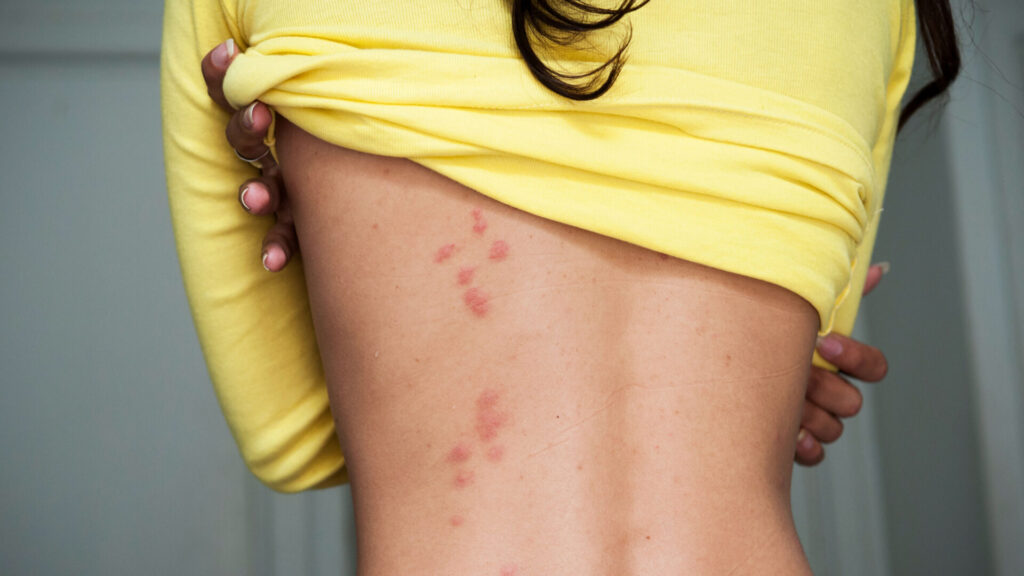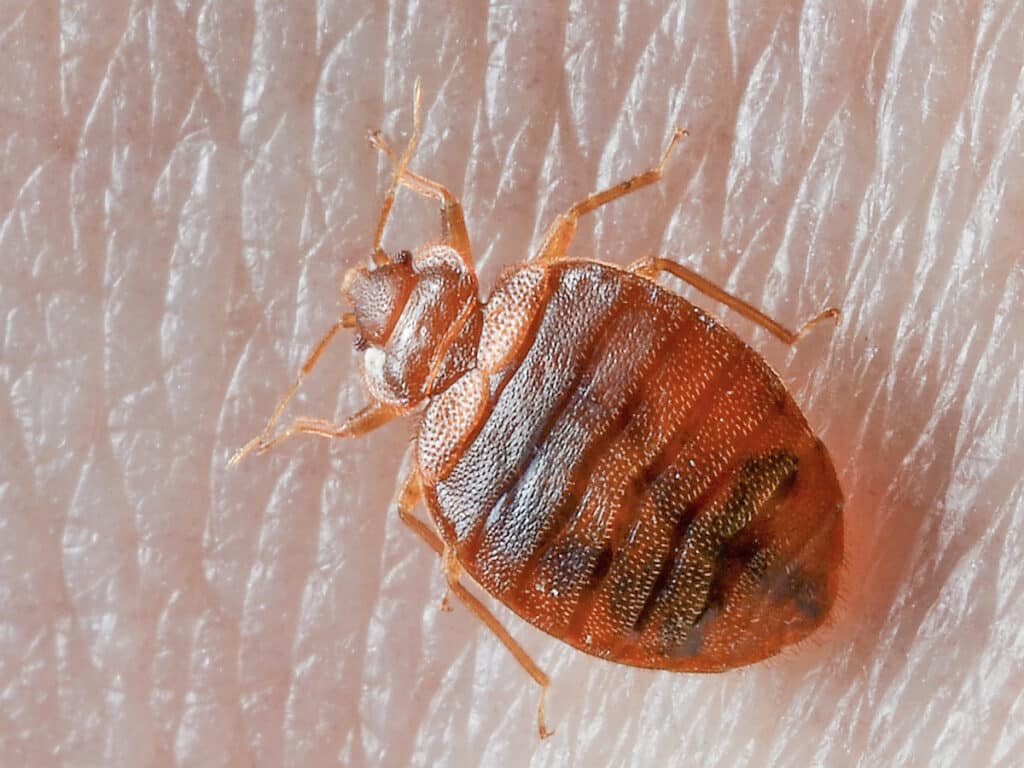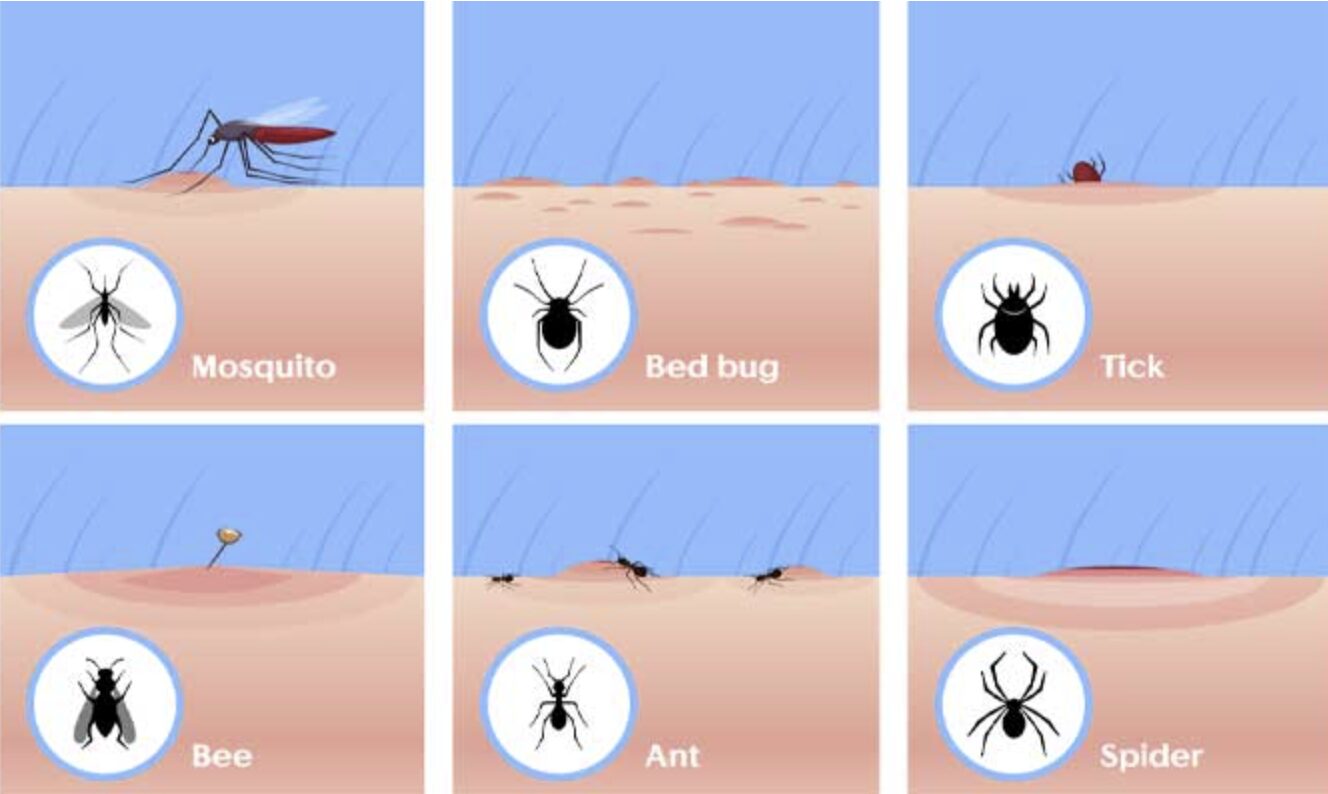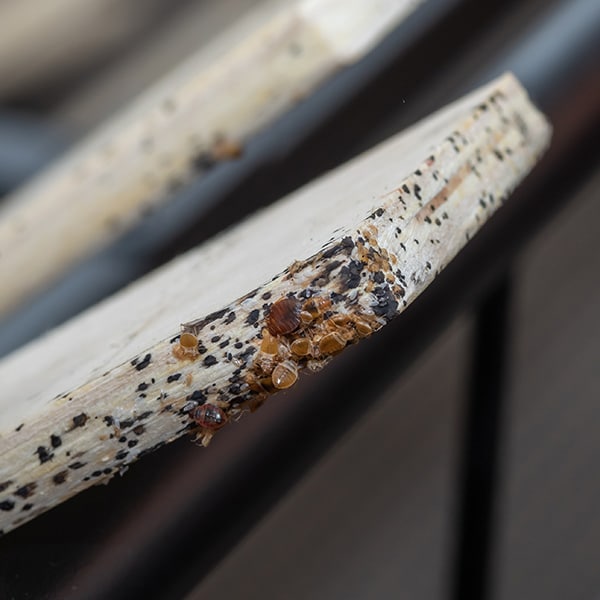Bed bug bites often appear as small, red welts in clusters or lines on exposed skin, and are frequently mistaken for mosquito bites. Bed bug bite symptoms, such as itching, redness, and swelling, can help distinguish bed bug bites from other skin irritations.
Everyone’s skin reacts differently when bed bugs bite them. This means that the bites or signs of bed bug activity may be different on your skin compared to somebody else’s. It is also common for a bed bug bite to be misidentified as a rash or another insect bite. Understanding the signs of bed bugs and their bites can help you identify an infestation early.

Bed bugs feed by biting exposed skin, usually at night, and their biting process involves inserting their mouthparts into the skin to draw blood. This often results in multiple bites in a single feeding session, which can appear in straight lines or zigzag patterns.
Most bites occur while you are asleep, as bed bugs are nocturnal and prefer to feed at night.
It is important to note that the initial bite may go unnoticed because bed bugs inject anesthetics and anticoagulants, delaying the appearance of symptoms for several days.
Appearance: Bed bug bites often appear as reddish-brown welts that may be slightly raised and about the size of a small apple seed. These bites can also develop into itchy welts, which are a common symptom.
Adult bed bugs feed at night. They move across your skin as they bite. Their feeding habits often result in the following patterns, with bed bug bite marks frequently appearing in a straight line, which is a characteristic sign of a bed bug bite.
This is when you can see multiple bites close together. This happens when bed bugs feed in the same area.
This is when you can see a trail of bites in a pattern similar to the letter Z. This happens as bed bug nymphs or adult bed bugs move while feeding.
You may only see random bites in scattered places rather than a distinct pattern. This doesn’t mean that your bites haven’t come from bed bugs. You should look for other signs, such as shed skins or dark spots on your bedding.

Bed bug bites can vary based on skin type, allergic reactions, and how recently the bed bugs have fed. Some individuals may experience severe itchiness as a reaction to the bites. Here are the main features, and keep in mind that scratching the bites excessively can increase the risk of secondary infections.
Young bed bugs leave smaller bites. Adult bed bugs cause larger, more inflamed welts. The bites can range in size from a few millimetres to 1 centimetre in diameter.
On lighter skin, bites appear as red, inflamed welts. On darker skin, bites may be darker brown or reddish-brown. The texture of the bites is often raised and swollen.
Pink or red bites may darken over time. Bed bug bites do not typically produce blisters or pus. If scratched excessively, they may lead to bleeding or skin infections.
Distinguishing bed bug bites from flea bites, mosquito bites, or spider bites can be difficult, but there are key differences to look for.
Bed bug bites usually appear as small red welts, sometimes forming a zigzag pattern or clusters. Bed bugs feed on blood, which is why they bite people, especially at night while they sleep. They tend to occur on exposed skin areas such as the arms, shoulders, and legs. The reaction can be delayed, sometimes taking hours or even days to develop.
Many people experience severe itching with bed bug bites. Others may have little to no reaction at all.
Flea bites, however, are tiny, red, and very itchy. They often feature a central puncture where the flea has fed. They are commonly found on the ankles and lower legs, as fleas tend to bite in areas closest to the ground.
Flea bites are usually visible immediately after being bitten. They are usually always intensely itchy.
Mosquito bites are usually raised, round bumps that can appear anywhere on the body. Unlike bed bug bites, mosquito bites tend to itch immediately and may cause mild to intense irritation, depending on an individual’s sensitivity.

While bed bugs do not transmit disease to humans, their bites can cause other health problems, such as:
Some people may experience severe itching or an allergic reaction to bed bug bites. Repeated scratching of bed bug bites can lead to skin infections.
Living with bed bugs can cause stress, anxiety, and insomnia. A prolonged bed bug problem can contribute to mental health concerns like depression and chronic fatigue.
Bed bugs primarily feed at night, leading to restless sleep and discomfort. Health and mental hygiene may suffer due to ongoing stress.
If you suspect bed bug bites, here’s how to relieve symptoms:
1.) Wash the affected area with soap and warm water.
2.) Apply over-the-counter anti-itch creams or calamine lotion to soothe irritation.
3.) Take antihistamines if experiencing an allergic reaction.
4.) Avoid scratching to prevent skin infections.
Seek medical attention if:

If you are still unsure if the bites you have on your body come from bed bugs, you should look for additional evidence of bed bugs, such as distinctive bite marks. These bite marks often appear in straight lines or zigzag patterns and are a common sign of bed bug activity.
Bites alone are not always proof of an infestation. Other signs of bed bugs include:
1.) Blood spots on bed sheets, pillows, or mattress seams.
2.) Bed bug excrement (tiny dark spots) on bedroom furniture, box springs, or walls.
3.) A musty odour in areas where bed bugs hide, such as electrical outlets and cracks in furniture.
4.) Bed bug eggs or young bed bugs (nymphs) in hiding places like loose wallpaper, headboards, and second-hand furniture.
If you find bed bugs alongside bite symptoms, you likely have an infestation. Be aware that excessive scratching of bites can lead to skin infection, so monitor for redness, pus, or oozing and consult a doctor if these symptoms occur.
If you’ve confirmed a bed bug infestation, it’s important to act fast. DIY methods may reduce activity temporarily, but professional intervention is essential for full eradication. At ThermoPest, we specialise in bed bug heat treatments that safely eliminate all life stages — from eggs to adults — in just one visit. Our BPCA-trained technicians use advanced thermal systems designed to reach every hiding place without relying on harsh chemicals.
Before your treatment, you can take a few simple steps to help prepare and reduce visible activity:
Vacuum thoroughly around mattresses, bed frames, and upholstered furniture to remove live bed bugs.
Use a stiff brush to scrub along mattress seams and dislodge eggs.
Wash all bedding, clothes, and linens at high temperatures (60°C or above).
Seal infested items in plastic bags until your professional heat treatment.
Close up cracks and gaps around skirting boards and electrical outlets to minimise hiding spots.
These measures can help reduce the immediate population, but only a professional heat treatment will fully eradicate the infestation and prevent it from returning.
Get in touch with ThermoPest today if you require help with bed bugs.
Leading experts in bed bug control
Guaranteed quick and rapid responses to urgent infestations
For ongoing problems, use our preventative contracts
Bed bug bites typically appear as small, flat, or raised red bumps on the skin. A distinguishing feature is their arrangement; bites often manifest in lines or clusters of three to four. This pattern, sometimes called “breakfast, lunch, and dinner,” occurs because the insect feeds, is disturbed or moves, and feeds again.
Call us on 0808 189 2310 – or complete our quote form below.
Speak to a bed bug expert today!
Enter Your Details To Request A Call Back
Enter Your Details To Request A Call Back
Enter Your Details To Request A Call Back
Enter Your Details To Request A Call Back
Enter Your Details To Request A Call Back
Enter Your Details To Request A Call Back